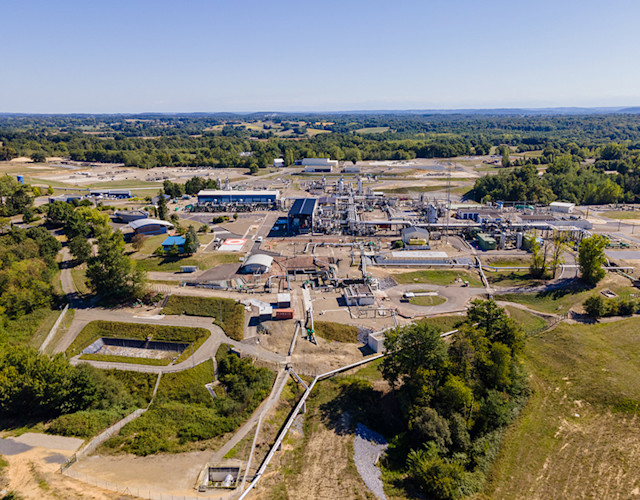Urgence gaz 0 800 028 800

Teréga: more than 50 years’ experience and operations in gas storage
The underground storage site at Lussagnet (Landes) came into service in 1957. The Izaute site (Gers) came into service in the early 1980s. Their specific characteristics and coordinated management mean that we can guarantee performance and competitiveness.
Two underground gas storage sites and a strategic position for teréga
We operate two underground natural gas storage facilities, at our Lussagnet (Landes) and Izaute (Gers) sites. Already containing around a quarter of France’s gas storage capacity, their geographical position means they have a major role to play at the crossroads of south European gas exchanges.
The Europe-wide opening up of markets and the multiplication of exchanges has led us to pursue their development in response to the constant growth in storage. A number of projects have been undertaken to modernise the infrastructures and increase their capacity.
LUSSAGNET : Fifty years of increasing activity
Brought into service in 1957, with the Lacq gas deposit, the Lussagnet site is located in the Landes department (40). While its activity is mainly associated with regulating gas production coming from the Lacq plant, its capacity has already increased fourfold! Alongside the Izaute site, it currently supplies the whole of our grid and part of the other French grids.
Today, the Lussagnet site represents a total storage volume of 3 GNm3, 21 injection/draw-off wells and 17 inspection wells, 7 compressors with a total power of 30 MW, 2 gas dehydration units etc.

IZAUTE : A history linked with increasing demand for gas
The commissioning of the Izaute site in the Gers department (32) in 1981 was closely linked to the increasing demand for gas and the increasing volume of exchanges, particularly within Europe. It is linked to Lussagnet by two pipelines 600 mm in diameter and approximately 10 km long. The location favours centralised coordination from Lussagnet.
Today, the Izaute site lays claim to a total authorised storage volume of 3 GNm³, a total developed storage volume of 3 GNm³, 10 injection/draw-off wells and 15 inspection wells.
The maximum draw-off flow from our two sites is 48 MNm³/day.
How is the potential of teréga’s storage sites determined by their history?
40 million years ago, Lussagnet and Izaute were on the coast, at the mouth of a river. This area received all the deposits deriving from erosion of the Massif Central, and particularly sandy deposits. It was that erosion which formed the different geological strata which now form the subsoil of our two sites.
This sandy layer encloses a groundwater deposit – an aquifer – which extends below the whole of southwestern France, from the Pyrenees to the north of the Bordeaux region, and across to the foothills of the Massif Central. And after 40 million years of sedimentation, that layer is now surmounted by a blanket of clay approximately 500 metres deep and forming a perfect seal. In the meantime, the compression which raised up the Pyrenees also created folds in the subsoil, and particularly the structures at Lussagnet and Izaute, which form an inverted bowl shape.
Principles of underground storage

The choice of centralised management of the two gas storage sites at Teréga
The two storage sites are managed and controlled from the Lussagnet site. The resulting centralisation of all the gas processing and compression facilities on that site enables better coordination of the management of the two storage facilities. It also contributes to improved performance and competitiveness.
The surface installations chiefly comprise:
Pipelines enabling the gas to be directed to the various processing and compression installations;
processing installations dedicated to the drawn-off gas (the injected gas does not require prior processing);
compression units for the draw-off and injection phases.
How does an operating well work?

Gas storage, monitoring of groundwater quality
We have established a monitoring network comprising numerous wells to inspect the aquifer at our gas storage sites. The aim is to track any changes in the depth of the groundwater and the physical-chemical characteristics of the water.
This monitoring network enables us to make sure that our operations are coordinated with others using the groundwater:
The Adour-Garonne water agency;
the drinking water distribution industry;
farmers;
spas.
Twice a year, we engage two independent laboratories to carry out a water quality inspection. In addition, all these tests are forwarded to the authorities.






